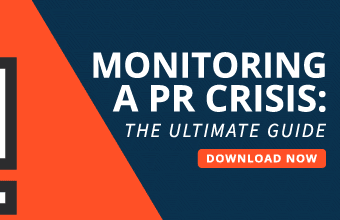The pandemic and protests have upended our personal and professional lives, calling into question long-held beliefs about health, justice, equality and more. Against this backdrop, the marketing messages that were once the lifeblood of business now feel insignificant, insensitive or irrelevant. Now more than ever, consumers crave messages that evoke resilience, humanity and hope, and organizations must shift their content strategies in response.
Messaging, however, is far from a set-it-and-forget-it undertaking. It requires diligent, purposeful and consistent market analysis, iteration and revision to align with late-breaking circumstances and rapidly changing consumer expectations. And in times of crisis, the importance of the words you choose is magnified.
If your messaging could use a refresh—and let’s be clear here that if you haven’t revisited it recently, it does—consider these three steps to ensure that relevancy, authenticity and adaptability remain at the center of your content strategy.
Analyze your audience
Capture consumer hearts and minds. What was top of mind six weeks ago is now a relic of the past, so marketers must intimately understand their audience personas, values, beliefs and expectations to survive. After all, accordingto the Kantar COVID-19 barometer report, 64 percent of consumers want brands to communicate their values through their messaging.
Among the questions to ask yourself: What are your customers or clients thinking, feeling and experiencing? What are they focused on right now? What do consumers want to hear in times of heightened uncertainty? What causes are consumers passionate about, and what reassurances do buyers need? How do your products and services address the pressing needs of your customers, employees, investors, partners and the community? The answers can help you isolate, craft and customize a content strategy that inspires allegiance and compels action.
Adapt your content to the new reality
Survey the scene. Before you can effectively adapt your content to this new, ever-evolving environment, you need to conduct a mini audit of your existing marketing materials. This includes your website content, internal and external properties, social media channels, blogs, newsletters, brochures, e-books, perspectives, whitepapers and visual assets. Then, dissect the meaning behind your messages from a consumer perspective. What story does your content tell about your greater brand purpose, values and beliefs, and what emotions do the descriptions you use conjure up? Determine what content needs to be refreshed, reframed or removed altogether. Regardless of the shift in messaging you choose, it needs to be authentic to the brand and consistent across the board.
Take a stand. We’re in a pivotal, brand-defining time. The national conversation around racism, police brutality and public unrest has eclipsed the pandemic, and consumers are paying attention to how brands listen, learn and engage in the conversation. Whether (and how) you take a stand for what you believe in or stay silent will affect your reputation for the long term: According to a recent survey, 60percentof American consumers say how a brand responds to the racial injustice, bias, bigotry and oppression over the next several weeks will influence whether they buy or boycott their products in the future.
Actions speak louder than words. Brands that broadcast messages externally that differ greatly from the behind-the-scenes reality for employees risk tarnishing their public perception, often irrevocably. Consider the case of Reformation, which built its brand around sustainability, responsibility and ethics. The fashion company came under fire recently for allegations related to ongoing cultural discrimination, allegations that were amplified across social media by prominent industry influencers. This example (and countless others) show that it’s not enough to just provide lip service; brands must ensure that what they say in public is an accurate representation of the leadership, culture, values and purpose of the organization – or be held accountable for any discrepancies.
If content is king, language is queen. Word choice is incredibly powerful, but to be effective, it must be grounded in authenticity. When tensions are at an all-high time high, you need to consider the hidden meaning, cultural significance or varying definitions and connotations behind the words you choose to convey your brand identity. To be authentic, language must be aligned with your brand promise and strategic business objectives.
Timing is everything. Review your calendar, keeping your eye out for scheduled content that could come across as tone-deaf and result in a loss of followers. Nike’s immediate response to the COVID-19 pandemic was to do away with its original content agenda and design new advertising campaigns designed to strike an emotional chord with audiences young and old. These ads encouraged consumers to “play inside, play for the world” and inspired sports fans to be overcome adversity—“We are never too far down to come back.” Chiquita Brands also pivoted quickly, touting a new slogan in the first weeks following widespread shelter-in-place mandates: “I’m already home. Please do the same and protect yourself.” Still other brands have re-examined thought leadership campaigns—POVs, perspectives and the like—paying particular attention to how their unique viewpoint on a topic will come across to readers whose jobs, families and health have been affected.
Chart the path forward
Here’s where the rubber meets the road. Your content strategy must align with your business goals. What is your primary target in distributing content, and how does it map back to your business strategy? How frequently do you need to reevaluate your messaging accordingly? The one thing the pandemic has shown us is that everything can change at a moment’s notice, so it’s best to err on the side of agility.
These are uncertain times for the strategic communications profession, and we’re all learning together, as we go. The one thing we know for sure is that relevance, authenticity and adaptability have never been more important. In this landscape, brands that put consumers’ best interests at the heart of every communication can build the strong relationships needed to thrive today as well as in a more just, post-pandemic future.
This article was originally published on June 25, 2020 and republished on March 11, 2021.








